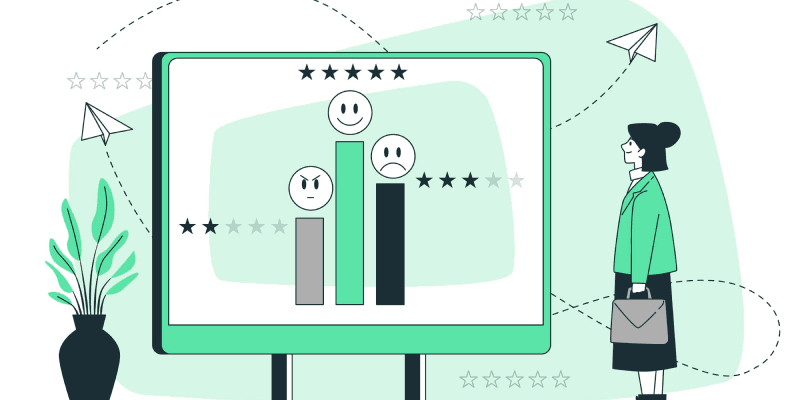My Top 5 Prospecting Apps for the Lean Start-Up

There is a county in Ireland with a reputation for being cheap (you know who you are ;-)). They say people from this county can peel an orange in their pockets. There’s also a (hopefully) apocryphal tale of a man from the county who eats his dinner in a drawer (if anyone calls around, he closes the drawer so he doesn’t have to share!).
Lean startups can learn from these canny folk and we certainly have. As a bootstrapped startup, we strive to find inexpensive or free solutions to help us stretch our sales development budget. Sometimes it pays to be frugal.
Prospecting at Akita
Let me give you a quick insight into Akita’s prospecting challenges as they inform why I’m a fan of these particular business development apps.
The first step in any prospecting effort is to clearly identify your target audience. For Akita, we look for companies that:
- Have a subscription/recurring revenue based,
- Place an emphasis on customer success,
- and use web-based software to run their business.
We then strive to find an individual in that company who can make software buying decisions on behalf of their customer success efforts. Most likely someone who is concerned with reducing customer churn and/or increasing customer lifetime value.
Akita’s Lead Prospecting Stack
To make our prospecting more efficient, we use five cheap or free services to help us identify and research potential customers and place them at the top of our sales funnel.
Builtwith (Paid)
The first app we need is one that will identify companies using the applications, or combinations of applications, that we integrate with. We are looking for companies that use the likes of Salesforce, Zendesk, Google Apps, Intercom, Microsoft Dynamics, Xero, Mailchimp, etc.
BuiltWith allows you to see what technologies a company are using, so long as those technologies are connected to that company’s website. This allows us to run and export a report of all companies using specific technologies. We can then target our messaging to companies we know we can add significant value to. Importantly, you can also create lists of your competitors customers!
So why go with Builtwith and not another similar service like Datanyze? Well, cost. We’re in bootstrapping mode, so although Datanyze is a great tool, you need to commit to a minimum annual contract of $12,000. With Builtwith you could sign up for a premium account for $300 per month, extract the data you need, and cancel at the end of month one.
LinkedIn (Free/Paid)
Now that we know the companies we want to target, we need to narrow our focus to decision-makers. LinkedIn is the obvious tool for this job. If you are working in business development this is one of the main weapons in your armoury-be an expert in it!
Do you need a premium LinkedIn account? The answer isn’t automatically “yes”. The savvy bootstrapper will probably be able to get by without spending the €500+ per year if requires.
There are, however, a couple of reasons that may force you to upgrade:
- You need to use the “company size” filter on your searches. If you want to avoid having your searches diluted with irrelevant profiles from companies that are too big or small, this powerful filter can be worth the investment alone, but for a start-up, probably not.
- You need to run a significant number of searches (once you hit LinkedIn’s recently introduced “commercial usage” thresholds for search (60 and 100 searches per month), they will limit your searching for the rest of that month. However, if you know your Ideal Client Profile then you should set up laser-targeted “advanced” searches, save them and you will receive weekly alerts with new leads, which should prevent you from breaching limits.
Which license should you get if you do have to upgrade?
I’m not sold on “Sales Navigator” (€708 p.a.) yet. It’s expensive and actually has some restrictions that the free profile and other premiums don’t have:
- You can’t see and send free messages to shared group members from searches,
- and you don’t have full access to introductions.
Finally, implementing the “Sales Navigator” would add an additional tool and step to a growing prospecting stack. At Akita, we’re not ready to take the leap.
My choice would be the “Business Plus” subscription (€516 p.a.).
IPFingerprint (Paid)
We love warm leads. If we could have a list of the names of all of the people visiting our website, wouldn’t that be great. Luckily, there are ways of finding out some of this visitor information.
You can invest in re-targeting campaigns with Google or Adroll, but costs can stack up. What I want is some insight into the identity of our visitors, so a reverse IP lookup service is invaluable. These platforms track everyone that visits your site and if the IP address for a specific company is recognised, they provide you with the details. Bingo! A warm lead.
As with Builtwith above, IPFingerprint provides a great service without having to sign up for a 12-month contract (unlike their competitors e.g. LeadForensics). It comes with a lower monthly price (from ~£120 ). If you don’t see the value, close your account at the end of month one or the two-week free trial.
Mailtester (Free)
I am a fan of LinkedIn but I’m still convinced email is better for a cold introduction than a LinkedIn message. But how do we find the correct email addresses?
There are plenty of services that purport to automatically source a person’s email address once you have their LinkedIn profile open. e.g. Free Chrome extensions like Connectifier and Prophet or expensive prospecting tools like Salesloft or Datanyse. The results from the free apps are a bit patchy but I do use Connectifier sometimes.
My favourite though, is a free app with a very old-school UI: Mailtester.com. You may need to try a few combinations before you get a positive result, but it works really well. Sometimes your prospect’s email server won’t let you validate the email address, in that case perhaps add another app, Rapportive, to your email client. Rapportive will validate any email addresses that have been used to set up social profiles.
Salesforce (Paid)
Yes, I know, these guys are the big beast of the CRM world. How can this be an app a bootstrapping start-up would use? In my humble opinion, it is a false economy to choose a cheap CRM and have to migrate to Salesforce at a later stage. (And if you’re asking the question, you definitely need a CRM).
Putting a huge effort into lead generation only to lose track of your opportunities is reckless at best.
Salesforce is the best platform on the market but you don’t need to invest in their premium accounts to get the kind of value you need as a start-up. You can purchase up to 10 licenses of Salesforce “Group Edition” before you are required to upgrade to the more expensive “Professional Edition” (€70 per user per month). “Group Edition” will give you everything you need to manage your data, reporting, activities and sales pipeline for €27 per user per month. As an added bonus, Group Edition works great with Akita!
As your prospecting efforts grow, you will need to standardise and invest more heavily in your business development tools, but for now, it’s about being smart and maybe eating a few meals in a drawer.








